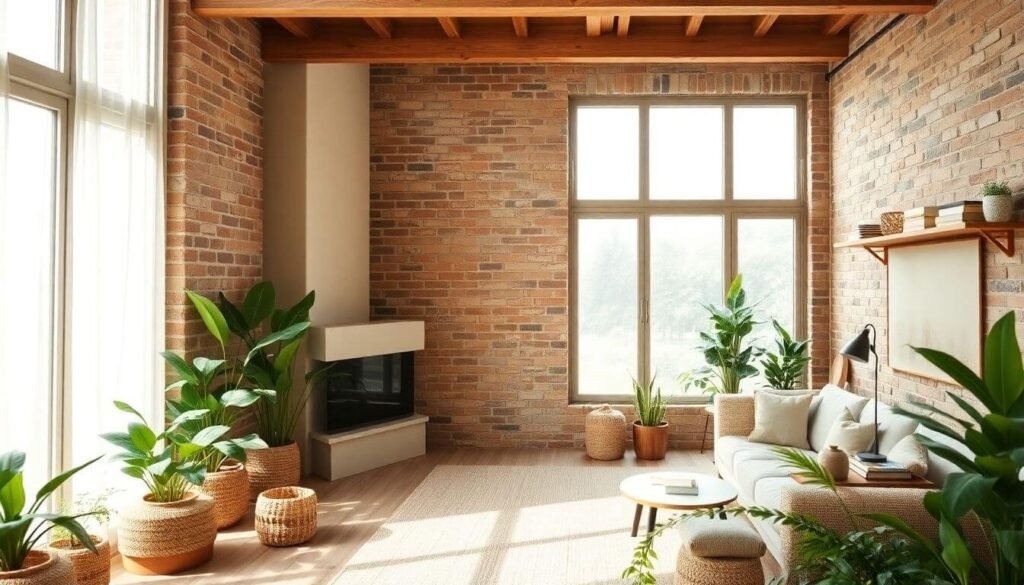
Embracing Sustainable Design emerges as a powerful response to the need for conservation and quality living.
Homeowners and designers alike are discovering that eco-friendly designs not only reduce environmental impact but also enhance overall well-being.
Eco-Friendly Materials, Techniques, and Practices
This article explores various materials, techniques, and practices that support sustainable design,offering innovative ideas for anyone looking to incorporate green principles into their homes.
- Choosing Sustainable Materials
The foundation of eco-friendly design begins with the materials we choose.
There is a plethora of options that not only minimize environmental harm but also contribute to healthier living spaces.
Recycled and Upcycled Materials
Recycling is an excellent way to give new life to old materials.
For instance, reclaimed wood can be transformed into stunning flooring or furniture, reducing the demand for new timber and preserving forests.
Up cycled metal from discarded appliances can serve as stylish light fixtures or decorative elements. The beauty of upcycled materials lies in their unique stories and textures, adding character to any design.
Bamboo and Cork
Bamboo, known for its rapid growth and renewability, is a fantastic alternative to traditional hardwood. It is strong, durable, and can be used for flooring, cabinetry, and even structural beams.
Similarly, cork, harvested from the bark of cork oak trees without harming the tree, offers a sustainable choice for flooring. Its natural sound absorbing qualities make it particularly appealing for residential spaces.
Low-VOC and Natural Paints
Volatile organic compounds (VOCs) found in conventional paints can adversely affect indoor air quality. Opting for low-VOC or no-VOC paints mitigates these risks.
Additionally, natural paints made from plant-based ingredients are safe for both occupants and the environment, allowing for creativity without compromising health.
- Innovative Building Techniques
Sustainable design isn’t just about materials; it also encompasses innovative construction techniques that prioritize efficiency and environmental responsibility.
Passive House Design
A passive house maximizes energy efficiency by utilizing natural resources.
This approach includes orientation strategies that take advantage of sunlight for heating and cooling, high-quality insulation to reduce energy loss, and carefully placed windows to ensure natural light while minimizing heat gain.
Adopting this technique can drastically cut heating and cooling costs, making homes more sustainable over time.
Green Roofs and Living Walls
Integrating nature into architecture through green roofs and living walls not only beautifies a space but also offers significant environmental benefits.
These installations improve insulation, reduce stormwater runoff, and enhance biodiversity by providing habitats for various species.
They also improve air quality and can lower urban heat levels, contributing to a more pleasant microenvironment.
- Energy Efficiency and Renewable Energy
Incorporating energy-efficiency systems and renewable energy sources can significantly reduce a home’s carbon footprint.
Solar Panels
Harnessing solar energy through photovoltaic panels is one of the most impactful steps homeowners can take toward sustainability.
By generating electricity from sunlight, homeowners can reduce reliance on fossil fuels and lower utility bills.
Moreover, advances in technology have made solar panels more efficient and aesthetically pleasing, enabling integration into various architectural styles.
Energy-Efficiency Appliances
Selecting appliances with high energy efficiency ratings, such as those labeled ENERGY STAR, contributes to lower energy consumption.
Smart home technology can further enhance efficiency, allowing homeowners to monitor and control energy use in real-time.
For example, smart thermostats can adapt to occupants schedules, optimizing heating and cooling.
Conclusion
Embracing sustainable design is not only a responsible Choice;it is an opportunity to create beautiful, functional spaces that enhance quality of life.
By choosing sustainable materials, adopting innovative building techniques, and implementing energy-efficiency practices, homeowners and designers can play a significant role in promoting environmental stewardship.
As awareness of the importance of sustainability continues to grow, integrating these principles into everyday design will pave the way for a greener future.
Whether you are embarking on a new build, considering renovations, or simply looking to make your current home more eco-friendly,
the myriad options available today ensure that you can make informed choices that benefit both your family and the planet.
Sustainable living is not just a trend; it is a vital step toward a healthier, more harmonious relationship between humanity and the environment.
The Future of Sustainable Design As awareness grows, the demand for sustainable practices will reshape industries. By adopting these principles, we can work together to build a more sustainable and healthier world.